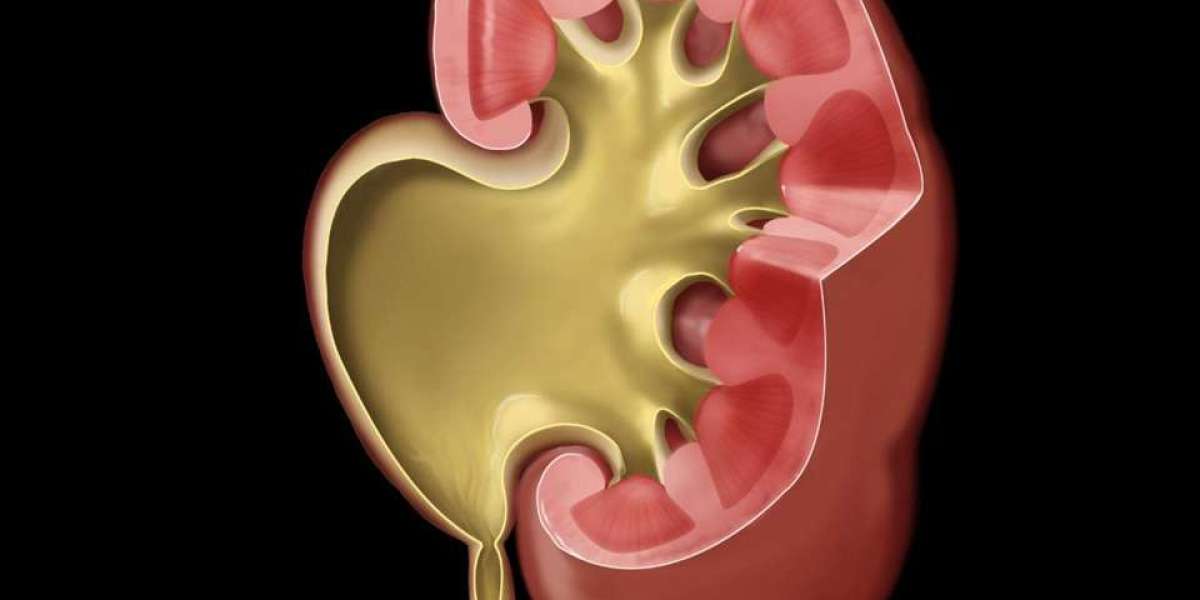Ureteral obstruction might not be a term you hear every day, but it’s a serious condition that can affect anyone — from infants to the elderly. This blockage in one or both ureters (the tubes that carry urine from the kidneys to the bladder) can cause pain, kidney damage, and infections if not treated in time. Let’s break down everything you need to know in a conversational yet deeply informative way.
What Is Ureteral Obstruction?
Ureteral obstruction is a medical condition where the flow of urine is partially or completely blocked along the ureters. This blockage prevents urine from draining properly from the kidney to the bladder. As a result, urine may back up into the kidneys, causing them to swell (a condition called hydronephrosis) and potentially suffer long-term damage.
Blockages can occur anywhere along the ureter and may affect one or both sides. Depending on the cause and severity, the obstruction may develop suddenly or slowly over time. Early diagnosis and treatment are crucial to prevent irreversible kidney damage.
Common Causes of Ureteral Obstruction
Understanding the underlying cause is essential for effective treatment. Here are some of the most common reasons behind a ureteral obstruction:
- Kidney Stones: One of the most frequent culprits. Stones can get lodged in the ureter, blocking the urine flow.
- Tumors or Cancers: Both cancerous and benign growths in or near the urinary tract can compress or invade the ureter.
- Scar Tissue (Strictures): These can form due to prior surgeries, infections, or trauma.
- Congenital Abnormalities: Some people are born with structural issues in their urinary tract that predispose them to obstruction.
- Pregnancy: The enlarging uterus can compress the ureters, especially in the third trimester.
- Enlarged Prostate: In men, the prostate gland can press on the urethra and indirectly affect the ureters and kidneys.
Each cause presents its own challenges and may require a different approach to treatment.
Symptoms of Ureteral Obstruction
Symptoms vary depending on whether the blockage is acute (sudden) or chronic (long-term). Here's what to watch for:
- Flank Pain: Pain in the side, back, or abdomen is common and may be severe if a stone is the cause.
- Urinary Issues: Decreased urine output, difficulty urinating, or frequent urination can occur.
- Hematuria: Blood in the urine, which may be visible or only detected under a microscope.
- Fever and Chills: Especially if the obstruction causes an infection like pyelonephritis.
- Nausea and Vomiting: These may result from pain or infection.
- Swelling or Edema: In chronic cases, the buildup of waste in the body may cause swelling.
If you experience these symptoms, especially flank pain with fever or chills, it’s important to seek medical attention immediately.
How Is Ureteral Obstruction Diagnosed?
Doctors rely on a combination of history, physical examination, and imaging to diagnose this condition. The process may include:
- Urinalysis: To check for infection, blood, or abnormal substances.
- Blood Tests: To evaluate kidney function and detect signs of infection.
- Ultrasound: A non-invasive way to look for hydronephrosis or stones.
- CT Scan: Provides a more detailed image of the urinary tract.
- MRI or Nuclear Scans: These may be used if other tests are inconclusive or to evaluate kidney function.
- Cystoscopy or Ureteroscopy: A camera is inserted through the urethra to look directly into the bladder and ureters.
Prompt diagnosis is vital to determine the severity and avoid permanent kidney damage.
Treatment Options for Ureteral Obstruction
Treatment depends on the cause, location, and severity of the blockage. It typically falls into two categories: relieving the obstruction and treating the underlying issue.
Emergency Relief
If the obstruction is acute and severe, the first step is to relieve the pressure in the kidney:
- Ureteral Stent: A thin tube placed in the ureter to keep it open.
- Nephrostomy Tube: A tube inserted through the back into the kidney to drain urine externally.
These are often temporary solutions until definitive treatment is done.
Definitive Treatment
Once stabilized, the underlying cause is addressed:
- Kidney Stone Removal: Using lithotripsy (sound waves), ureteroscopy, or surgery.
- Tumor Removal or Treatment: Surgery, radiation, or chemotherapy depending on the diagnosis.
- Stricture Repair: Using endoscopic dilation, stents, or reconstructive surgery.
- Surgical Correction of Congenital Issues: Especially in children born with anatomical abnormalities.
Sometimes, long-term stents or intermittent treatments are needed for chronic cases.
What Happens If It’s Left Untreated?
Ignoring or delaying treatment can have serious consequences:
- Kidney Damage: Long-term obstruction can lead to loss of kidney function.
- Urinary Tract Infections: Backed-up urine provides a breeding ground for bacteria.
- Sepsis: Infected urine that enters the bloodstream can cause life-threatening infections.
- Kidney Failure: In bilateral obstructions or if one kidney is already compromised.
That’s why any signs of urinary changes or pain should never be brushed off.
Can Ureteral Obstruction Be Prevented?
While some causes like congenital conditions can’t be avoided, others are preventable:
- Hydration: Staying well-hydrated can help prevent kidney stones.
- Managing Chronic Conditions: Diabetes, high blood pressure, or prostate enlargement should be monitored closely.
- Routine Imaging: For patients with known urinary issues or recurrent stones, regular check-ups can catch problems early.
- Infection Control: Prompt treatment of urinary infections can prevent scar tissue formation.
Living With Ureteral Obstruction
Chronic or recurrent cases can be managed with close monitoring, medication, or regular procedures like stent replacements. Many patients continue to live full lives once their condition is under control. Regular follow-up with a top urologist is key to maintaining long-term kidney health.
Final Thoughts: Don’t Wait on Symptoms Like Pain or Changes in Urine
Ureteral obstruction might sound like a complex medical issue, but understanding it could protect your kidney health and overall well-being. Painful urination, blood in urine, or lingering side pain shouldn’t be ignored. Speak with a healthcare professional early. With proper diagnosis and timely treatment, most people recover well without permanent damage.
- Can a ureteral obstruction go away on its own?
In some cases, such as small kidney stones, the obstruction may pass on its own with proper hydration and medical supervision. However, most cases require intervention to prevent complications. It’s crucial to get evaluated by a doctor to determine the cause and best course of action. - How long can a kidney be obstructed before permanent damage occurs?
A kidney can begin to suffer damage within a few days of complete obstruction. If left untreated for several weeks, the damage can become permanent. That’s why early detection and timely treatment are essential to preserve kidney function. - Is ureteral obstruction painful?
Yes, it can be very painful, especially if caused by kidney stones or sudden blockage. The pain is usually felt in the lower back, side, or abdomen and can be sharp or cramping. Chronic obstructions might cause dull pain or no pain at all, making regular check-ups important.



